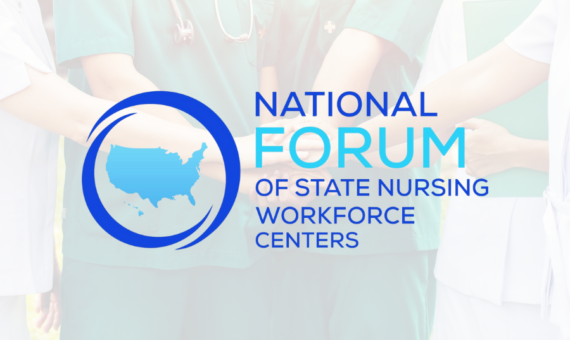As the workforce evolves, higher education institutions face increasing pressure to prepare students for the demands of today’s job market. To remain competitive, students must not only acquire theoretical knowledge but also gain practical skills that employers value. As industries increasingly prioritize hands-on experience, higher education institutions must integrate real-world student placement opportunities, such as internships and work-integrated learning, into their curricula to ensure students are job-ready upon graduation.
In addition to managing a complex network of students, requirements, and opportunities across many disciplines, placement program managers also steward their accreditation status, report on student outcomes, and foster strong relationships with community partners and organizations to enhance the overall user experience for both students and institutions.
However, today’s typical student placement programs can yield significant challenges for those responsible for connecting future medical professionals, teachers, social workers, and engineers with real-world experiences and opportunities. Current college placement workflows often utilize multiple disconnected systems, departments and organizations, leading to increased staffing costs, accreditation risks, and difficulty tracking student requirements.
Some teams may juggle as many as eight platforms, databases, documents and spreadsheets to coordinate all the components of a student’s complex journey of placements, assessments, and prerequisites. Managing thousands of placements or projects a year relies on coordination between colleges and hiring entities who often don’t communicate with each other, which duplicates efforts, making placement cumbersome, time-consuming and frustrating for overwhelmed staff and aspiring students. With limited budgets and stretched resources, these processes also demand more staff hours, preventing teams from focusing on essential administrative duties and limiting the face time needed to build relationships with potential employers. Additionally, the fragmented process complicates compliance and reporting, increasing the risk of non-compliance with accreditation standards due to missed certifications, inaccurate data, or delays in documentation. This jeopardizes the institution’s reputation and can lead to significant financial penalties and loss of funding, further exacerbating the challenges already overburdened staff face.
The Essential Role of Student Placements
A vital component in bridging the gap between academic learning and practical application, student placements provide invaluable hands-on experience that enhances students’ understanding of their field, cultivates professional skills, and fosters connections with industry professionals. Key benefits include:
- Skill Development: Placements help students develop essential skills often not taught in the classroom, such as communication, improved critical thinking, teamwork and problem-solving —qualities that employers highly value.
- Networking Opportunities: Students can build professional connections and networks that may lead to job offers after graduation.
- Understanding Industry Expectations: Engaging with the workforce allows students to gain insights into industry standards and expectations, and tailor their academic pursuits and career aspirations accordingly.
- Experience: In healthcare, social work, teaching, clinical placements, field education, and cooperative education are imperative. In other industries, practical experience can set a student apart in a competitive job market.
- Feedback Mechanism: Placements provide valuable feedback for both students and institutions. Students can learn about their strengths and areas for improvement, while institutions can assess the effectiveness of their programs.
Common Challenges in the Student Placement Process
Despite its importance however, the student placement process is fraught with challenges that can hinder its effectiveness, including:
- Coordination Difficulties: Coordinating placements across disparate departments, programs, schools, sites, and stakeholders can be a logistical nightmare. Different programs may have unique requirements, timelines, and processes, which leads to confusion and inefficiencies.
- Lack of Visibility: Institutions often struggle with a lack of visibility into the placement process across departments, schools and campuses, making tracking student placements, monitoring progress, and ensuring compliance cumbersome. Insufficient clarity can lead to missed opportunities and increased administrative burdens.
- Communication Gaps: Without a centralized system, communication gaps between students, faculty, and employers can lead to misunderstandings and unmet expectations, resulting in poor placement experiences and dissatisfaction.
- Regulatory Compliance and Documentation: Higher education institutions must navigate a complex landscape of regulatory requirements related to student placements. Ensuring compliance while managing documentation can be time-consuming and overwhelming, particularly for smaller institutions with limited resources.
- Resource Limitations: Many institutions face resource constraints—such as limited staff, budget constraints, and inadequate technology—that hinder their ability to manage placements effectively and contribute to a challenging placement environment.
Unlocking Efficiency in Student Placement Management
To address these challenges, institutions can eliminate manual placement tracking by embracing innovative technology that streamlines the student placement process. By leveraging student placement system software, institutions can save countless hours and significantly boost operational efficiency. This technology is a comprehensive solution designed to integrate various aspects of the placement process into a, user-friendly interface. A centralized platform can significantly:
- Ease Administrative Burden: Rather than reliance on disparate emails, spreadsheets, forms, documents and databases, placement management software streamlines management of the entire student placements across various departments and sites—to simplify coordination, making it easier to track placements, monitor progress, and ensure compliance with regulatory requirements.
- Save Time: Institutions can significantly reduce the time spent on administrative tasks, enabling staff to focus on more strategic initiatives.
- Enhance Visibility: A centralized platform allows institutions to gain real-time visibility into the placement process with easily accessible data on student placements, employer feedback, and compliance documentation, which allows for proactive management and timely interventions when issues arise.
- Improve Communication: Facilitating seamless communication among students, faculty, and employers, a platform enables all stakeholders to share information, updates, and feedback in real-time, reducing misunderstandings and enhancing the overall placement experience.
- Mitigate Compliance Risks: Inaccurate data poses a constant threat to accreditation status. The platform automates documentation processes, ensuring that all necessary paperwork is completed and stored securely to reduce the risk of errors and compliance issues.
- Ensure Readiness: When systems lack coherence, last-minute surprises such as students missing certifications or credentials required by the hiring entities are commonplace. A centralized platform minimizes these potential errors.
- Control Costs: By streamlining the placement process, centralized technology empowers institutions to optimize their resources. Staff can focus on strategic initiatives, rather than getting bogged down in administrative tasks, ultimately leading to a more effective placement program.
- Streamline Reporting: A centralized platform simplifies reporting on student outcomes, placement statistics, and success, aiding accreditation teams and providing universities with valuable insights into their placement programs.
- Enrich Student Experience: When manual, disparate systems are confusing, students often don’t follow the placement process correctly, which taxes staff’s limited bandwidth to help with basic tasks and enhances the likelihood of errors or missed opportunities for students. This can lead to frustration, decreased satisfaction, and lower engagement.
Why Student Placements Matter to Institutions
- Reputation and Credibility: When employers recognize graduates as competent and work-ready, it positively impacts an institution’s reputation. Many rankings and accreditation bodies consider placement rates as indicators of program effectiveness, influencing public perception and enrollment.
- Student Enrollment & Retention: High placement rates are linked to student satisfaction and post-graduation success, as students who see a clear path to employment are more likely to complete their studies. Positive placement statistics can also attract more students, increasing enrollment and tuition revenue.
- Industry Partnerships: Establishing strong connections with employers can lead to internship opportunities, guest lectures, and collaborative projects, enriching the academic experience. These company partnerships can also provide significant financial support for research initiatives, scholarships, and infrastructure development. Strong partnerships often signal to prospective students and faculty that an institution is connected to the real world and is invested in producing relevant research and competent graduates.
- Alumni Relations & Giving: Successful placements lead to a strong alumni network who can contribute to the institution by mentoring current students or providing financial support. Alumni who are satisfied with their education and job prospects are likelier to give back to their alma mater.
- Funding & Grants: Many external funding sources, including government grants, prioritize placement outcomes when assessing eligibility for support, making strong placement rates essential for institutions seeking financial assistance.
- Workforce Development: Institutions play a crucial role in preparing a skilled workforce. By focusing on placements, they contribute to the economic development of their communities and regions.
Ultimately student placements align with higher education’s mission to educate and equip individuals for the workforce. Effective placement strategies improve students’ skills, industry connections, and employability. By streamlining operations with innovative solutions, institutions can enhance visibility, communication, and compliance, creating a more efficient and supportive experience for students and staff. Investing in effective placement management can bolster institutional reputation, attract students, and foster strong industry partnerships, ensuring institutions remain resilient and competitive in a dynamic job market.








